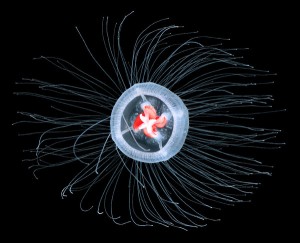 There is a great piece in the NYT today about the classic marine biology paper “Reversing the life cycle“, that describes the discovery that a small hydrozoan (a cnidarian, related to corals, jellyfishes and sea anemones) can reverse it’s life cycle, something unheard of until the mid 1980s.
There is a great piece in the NYT today about the classic marine biology paper “Reversing the life cycle“, that describes the discovery that a small hydrozoan (a cnidarian, related to corals, jellyfishes and sea anemones) can reverse it’s life cycle, something unheard of until the mid 1980s.
After more than 4,000 years — almost since the dawn of recorded time, when Utnapishtim told Gilgamesh that the secret to immortality lay in a coral found on the ocean floor — man finally discovered eternal life in 1988. He found it, in fact, on the ocean floor. The discovery was made unwittingly by Christian Sommer, a German marine-biology student in his early 20s. He was spending the summer in Rapallo, a small city on the Italian Riviera, where exactly one century earlier Friedrich Nietzsche conceived “Thus Spoke Zarathustra”: “Everything goes, everything comes back; eternally rolls the wheel of being. Everything dies, everything blossoms again. . . .”
Sommer was conducting research on hydrozoans, small invertebrates that, depending on their stage in the life cycle, resemble either a jellyfish or a soft coral. Every morning, Sommer went snorkeling in the turquoise water off the cliffs of Portofino. He scanned the ocean floor for hydrozoans, gathering them with plankton nets. Among the hundreds of organisms he collected was a tiny, relatively obscure species known to biologists as Turritopsis dohrnii. Today it is more commonly known as the immortal jellyfish. read it all here
Leave a Reply